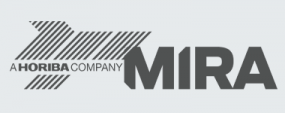

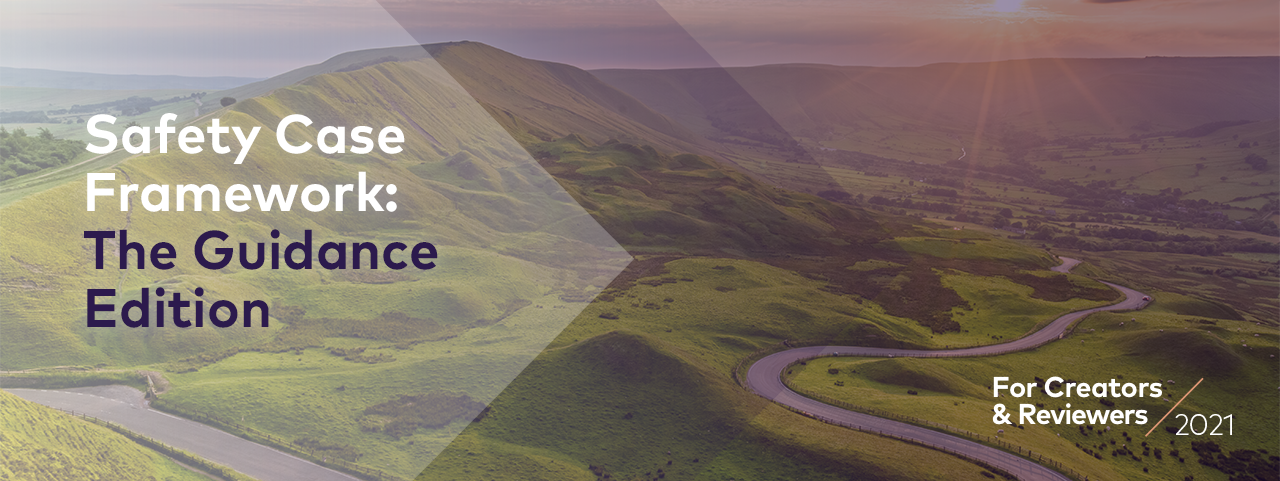
CAM Testbed UK-approved best practice guidance for safety case development in the UK.

The Safety Case Framework: Guidance Edition provides direction for the safe testing and trialing of connected and automated mobility (CAM) in the UK. Authored by HORIBA MIRA, TRL and WMG, and compiled by Zenzic, it aims to help trialling organisations and reviewers save time and money, with a unified approach to safety case development.
The guidance sets out detailed safety requirements, offers an efficient process for developing best-practice risk management, and improves interoperability within and outside CAM Testbed UK. This reduces the need to duplicate risk management reporting, whilst maintaining exemplary safety standards.
There are two reports – one for trialling organisations creating safety cases, and another for reviewers of safety cases.
Download the Safety Case Framework: The Guidance Edition
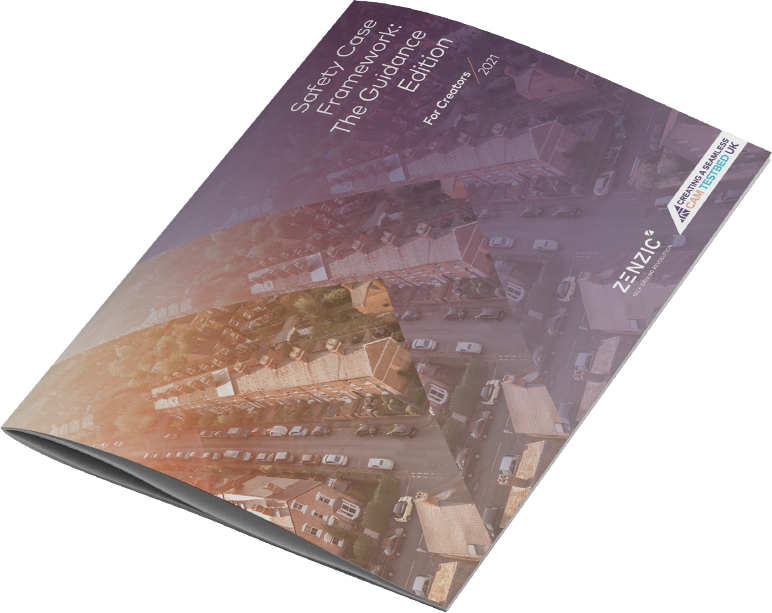
Creators

- Create comprehensive, best-practice safety cases that scale with the complexity of operational design domain (ODD).
- Save time and effort by using a flexible framework that’s common across CAM Testbed UK.
- Utilise the clear guidance on key standards required to safely test in the UK.
- Improve efficiency with key examples and practical templates.

Reviewers

- Save time and money, with unified, consistent and transparent safety case guidance.
- Use best practice examples and templates to interpret and review reports with confidence.
- Reduce repetition and duplication of work, with interoperable safety case development.
- Improve efficiency with a full view of key standards required to safely test in the UK.
Additional Resources
Download additional resources below to support the understanding of the Zenzic Safety Case Framework: Guidance Edition
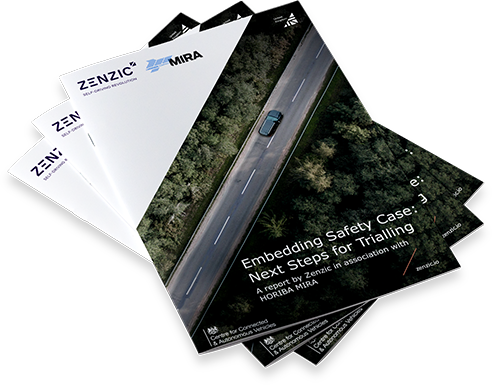
Embedding Safety Case:

Next Steps for Trialling
This report builds on the feedback received through a series of workshops held in November 2021. From this, the strongest themes were extracted and key recommendations where identified. A total of five recommendations for future work are set out within this report aimed at enhancing CAM Testbed UK and government departments such as CCAV or DfT helping to build robustness and promote best practice in the wider CAM ecosystem.

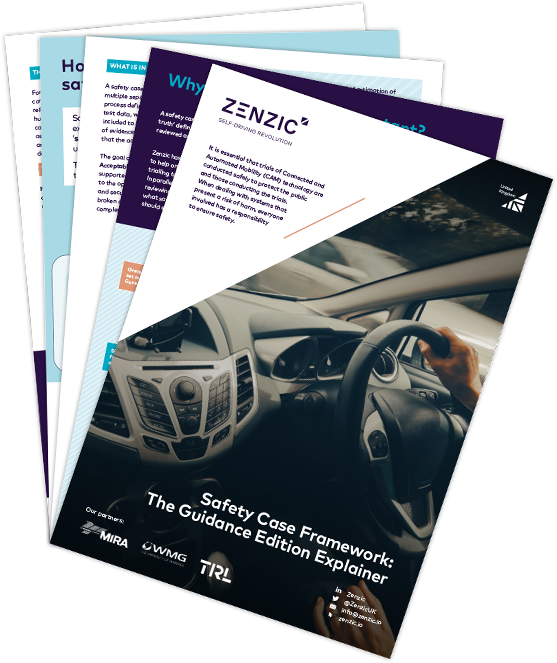
Non-technical Explainer

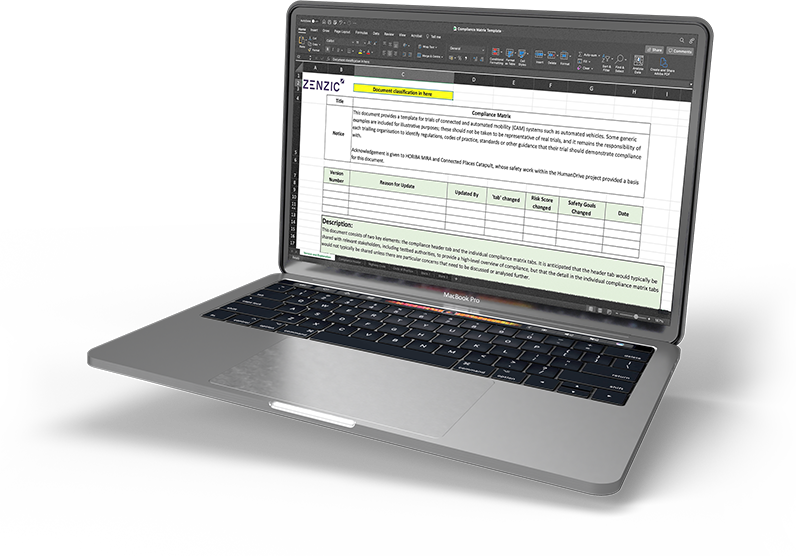
Useful Templates

- Operational Risk Assessment
- Cybersecurity Risk Assessment
- Incident Reporting Form
- Compliance Matrix
Written by experts
With thanks to the safety advisory group who provided expertise and guidance throughout the project – Centre for Connected and Autonomous Vehicles, DVSA, VCA, Oxbotica, Arrival, ZF, Oxford County Council, Transport for London, BSI and Highways England.
"TRL is delighted to be involved in the Safety Case Framework: The Guidance Edition, which provides safety case creators with more detailed guidance on the content of a safety case, as well as people who are reading or accepting safety cases guidance on the key elements they should be reviewing. We have worked collaboratively with WMG, HORIBA MIRA and other stakeholders to ensure that the safety guidance reflects industry good practice, is relevant and appropriate across the CAM ecosystems and enables a seamless transition between testing facilities for our customers."
Camilla Fowler
Head of Automation, TRL
"This work draws together the expertise of CAM Testbed UK to create detailed guidance with the user in mind. The reports provide practical guidance, examples, and templates for those creating safety cases and, for the first time, support for those who need to review safety cases. It provides a holistic view of the regulations, makes it easy for users to move between testbeds and gives clarity on what make a good safety argument. The guidance provides a flexible way to meet safety standards and requirements providing the basis for a standardised approach across the UK."
Bhavin Makwana
Business Analyst, Zenzic
"As connected and automated mobility technology evolves and trials become more complex, management of safety becomes more challenging. This guidance pulls together best practice to support both those creating safety cases and those reviewing them, in order to smooth the path to achieving and demonstrating a high level of safety."
Richard Hillman
Principal Engineer, HORIBA
"The updated guidance provides an important step towards highlighting the role of system safety in an operational safety context. An ODD based approach for both aspects is key to the scalability of the safety assurance process. Underpinned by the National Scenario Database (developed by WMG as part of CAM Testbed UK), a novel scenario generation method along with a validated simulation based testing process is essential to establishing system safety."
Siddartha Khastgir
Head of Verification & Validation, WMG
Background to the Safety Case Framework
Created in collaboration with CAM Testbed UK, it aims to strengthen testing processes, and improve public awareness of CAM testing in the UK.

Following the 2019 release of The Code of Practice for Automated Vehicle Trialling by the Department for Transport, Zenzic identified a requirement for a consistent approach across CAM Testbed UK, with safety requirements clearly set out in detail.
During 2019, an initial Safety Case Framework was developed, setting out top-level safety requirements for use across the CAM Testbed UK ecosystem. The initial framework formed the basis of the new BSI PAS 1881 standard. The framework was updated with the release of a second edition in 2020, which benefited from industry expertise and cross-sector contributions gained by BSI.
This 2021 Guidance is the third edition of the framework guidance, and has been based upon extensive research into existing methodologies. We held three industry workshops, attended by stakeholders with a wide range of perspectives, and were guided by an advisory group. It also draws upon the significant experience relating to trial safety management of the technical authors at HORIBA MIRA, TRL and WMG.
Talk to us
Contact us to give your feedback on the Safety Case Framework.
{{ teamMember.name }}
{{ teamMember.title }}
